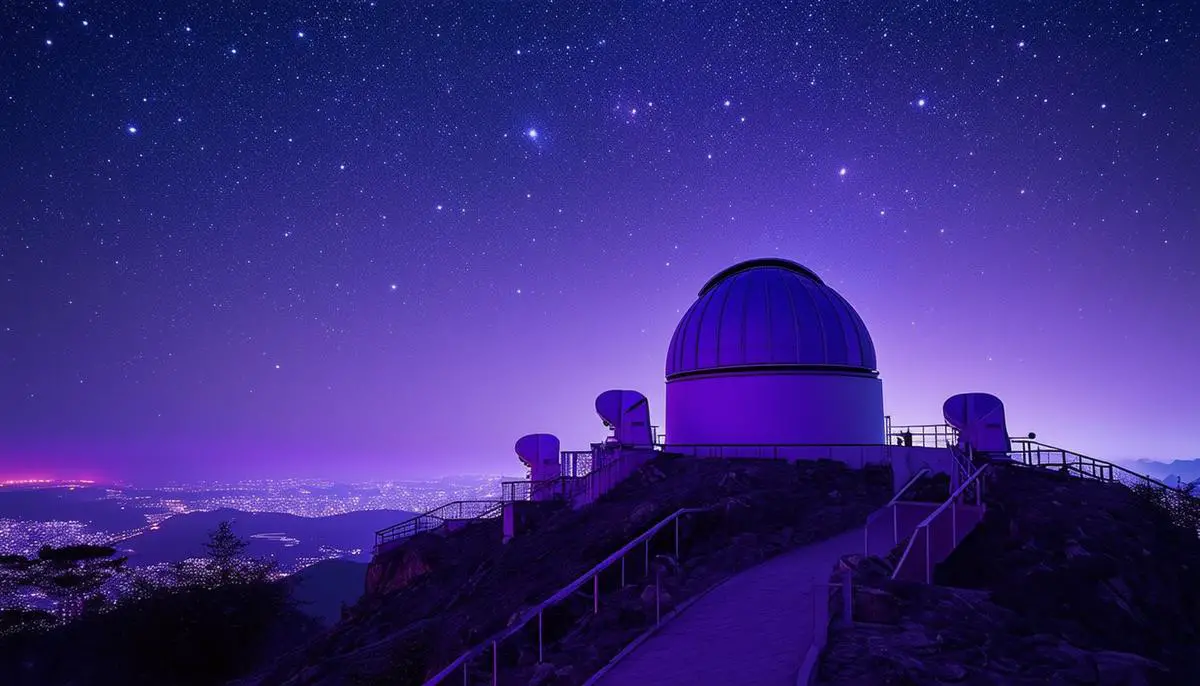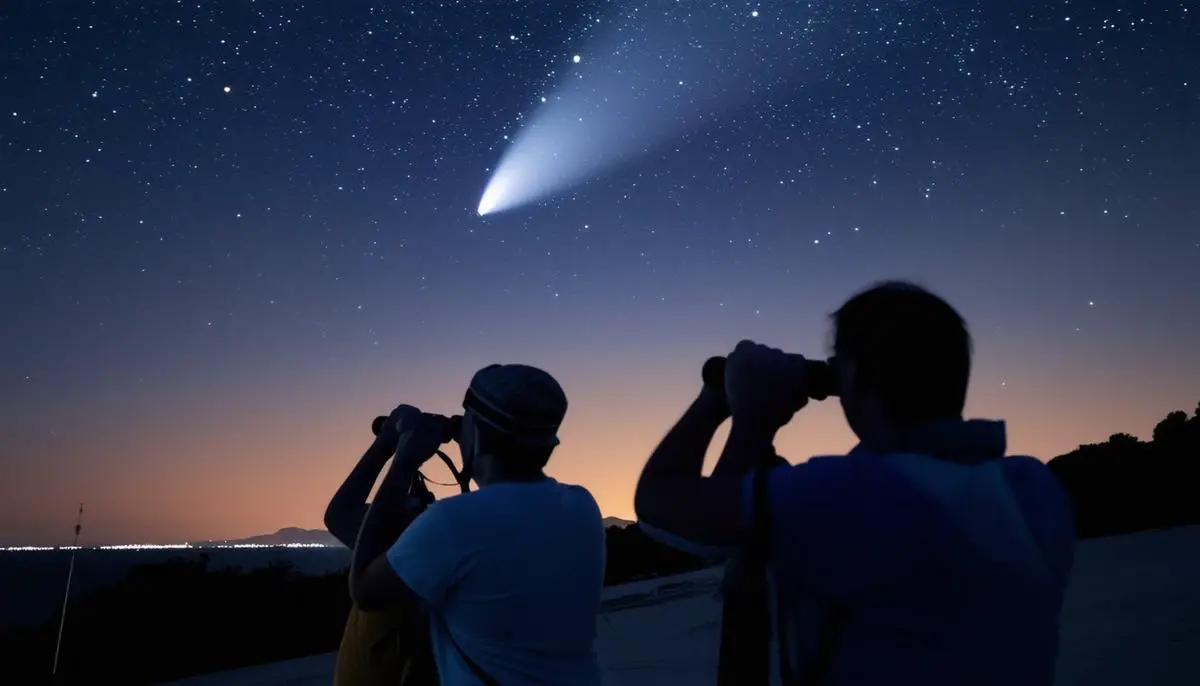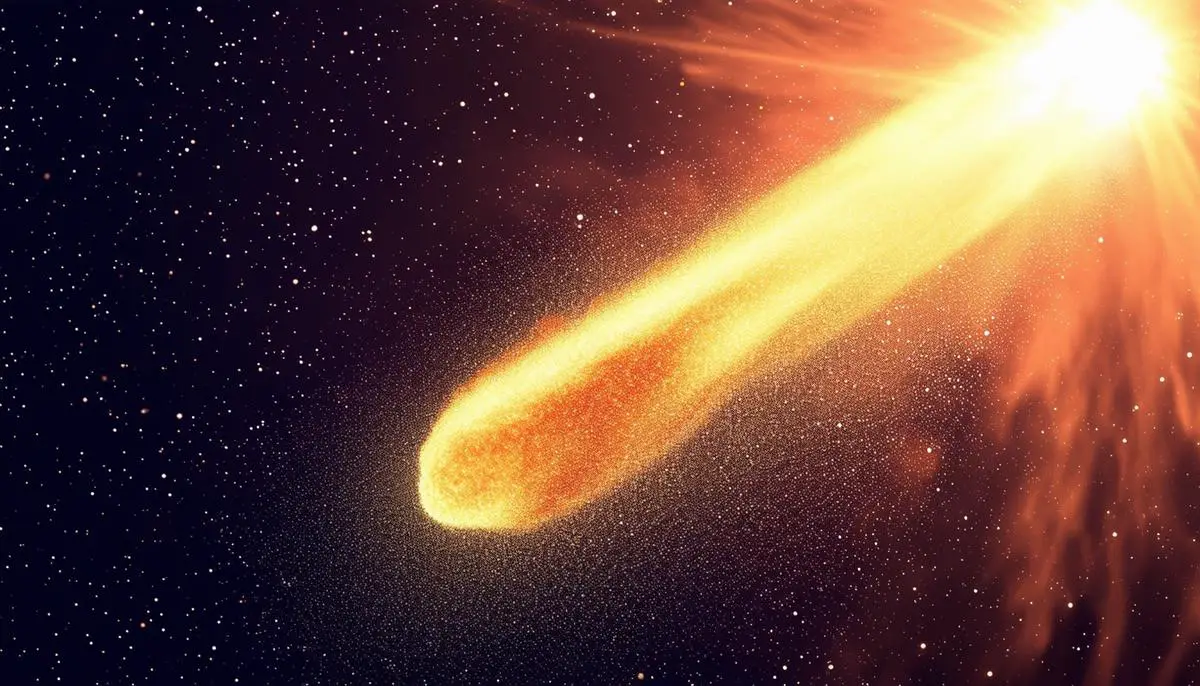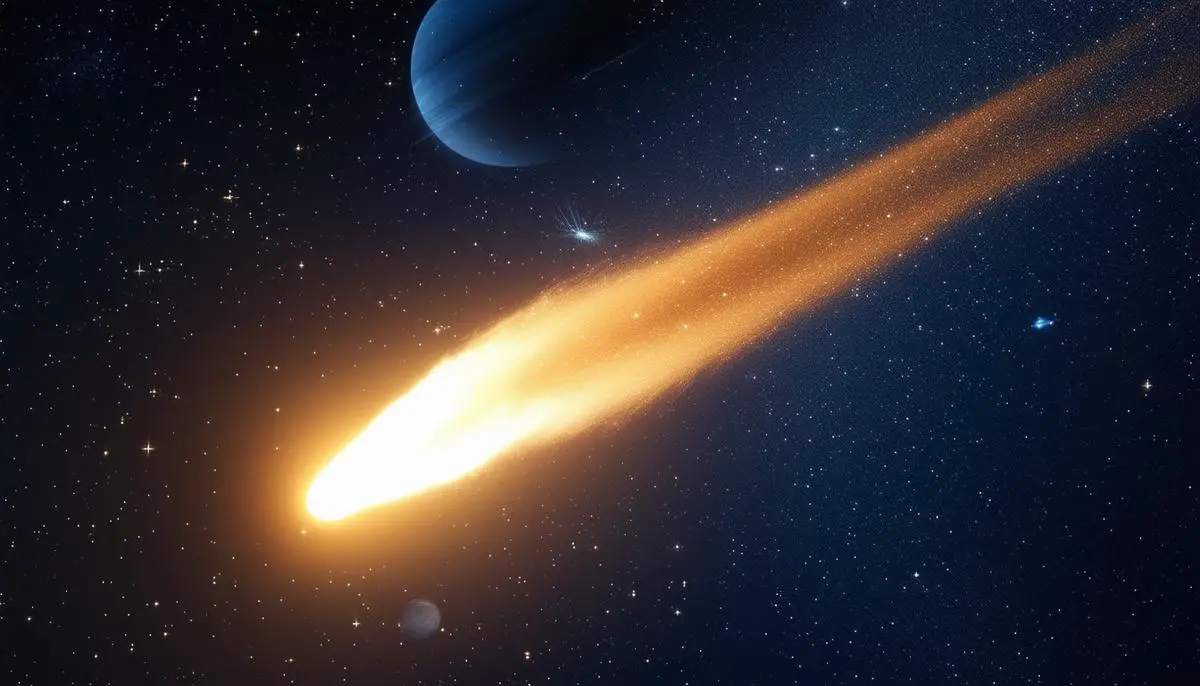Comet Tsuchinshan-ATLAS Discovery and Origins
Comet C/2023 A3, known as Tsuchinshan-ATLAS, was first spotted by astronomers at the Purple Mountain Observatory in China on January 9, 2023. Several weeks later, on February 22, 2023, the same object was detected by the Asteroid Terrestrial-impact Last Alert System (ATLAS) team in South Africa.
Emerging from the sun's glare, Tsuchinshan-ATLAS began its journey closer to the center of our solar system. Its trajectory, shaped by gravitational interactions beyond Neptune's orbit, offers insights into ancient solar system processes.
Before its discovery, C/2023 A3 had spent eons in the distant Oort Cloud—a reservoir of ancient cometary material. The gravitational influence of passing stars eventually nudged the comet towards the inner solar system, bringing it into view of Earth-based telescopes.
These discoveries showcase the collaboration of astronomers and observatories worldwide, bridging the gap between Earth and the distant celestial objects that populate our night sky.

Orbital Path and Current Position
Comet C/2023 A3 (Tsuchinshan-ATLAS) follows an open parabolic trajectory, ensuring that once it completes its journey around the Sun, it will exit our solar system. Currently near the constellation Sextans, the comet is approaching the Sun, creating a captivating display against the cosmic backdrop.
The comet's interaction with the Sun resembles an intricate dance, briefly vanishing into the Sun's glare before re-emerging with a brighter tail. This journey has given observers an excellent opportunity to study its brightness, which has continually surprised astronomers.
As Tsuchinshan-ATLAS reaches its closest point to Earth on October 12, it will offer an exceptional opportunity to witness one of the brightest comets of our century. Until then, enthusiasts and astronomers remain vigilant, awaiting clear skies and an unobstructed view of this celestial visitor.

Visibility and Observation Tips
To witness Comet C/2023 A3 (Tsuchinshan-ATLAS), timing and location are crucial. For those in the Northern Hemisphere, the week of October 12 offers the best chance to see the comet with the naked eye, as it reaches its closest distance to Earth, about 71 million kilometers away. Begin observations shortly after sunset, facing the west-southwest horizon.
In the Southern Hemisphere, the comet has already been visible in the morning sky and will transition to the evening sky, offering longer viewing windows as it climbs higher each day.
- Use binoculars or a small telescope to enhance visibility
- Check local weather forecasts for clear, dark skies
- Be prepared for changing viewing conditions
- Multiple attempts may be necessary for a clear sighting
Remember: Flexibility is key when observing this unpredictable celestial visitor.

Brightness and Forward Scattering Effects
The luminosity of Comet C/2023 A3 (Tsuchinshan-ATLAS) is influenced by its composition—a mix of dust, ice, and gas—and the phenomenon known as forward scattering. As the comet nears the Sun, these substances sublimate, forming the coma and tails that contribute to its visible brightness from Earth.
The comet's size also plays a role in its brightness. A larger nucleus can harbor more material, creating a more extensive and bright dust cloud as it sheds this material approaching the Sun.
Forward scattering occurs when sunlight interacts with microscopic dust particles in the comet's tail, potentially intensifying its apparent brightness when positioned between Earth and the Sun. This effect might make Tsuchinshan-ATLAS briefly shine as brightly as some planets, though such brilliance is typically fleeting.
Predictions suggest the comet's brightness may rival that of Venus, though it's important to note that comet brightness can be unpredictable. Even with favorable conditions, comets can change dramatically from one night to the next.

Significance of Cometary Events
Comet C/2023 A3 (Tsuchinshan-ATLAS) offers a unique window into the celestial mechanics and history of our solar system. These icy voyagers, relics from the solar system's formation, carry primordial material that provides insights into the early conditions of our cosmic neighborhood.
As Tsuchinshan-ATLAS approaches the Sun, its sublimation processes allow scientists to study its composition and behavior up close. These observations inform models of comet behavior and illuminate processes occurring in the solar system's outer reaches.
The comet's interaction with solar winds also provides valuable data on how solar radiation impacts cometary bodies and, by extension, offers insights into space weather and its effects on planetary atmospheres.
"Tsuchinshan-ATLAS presents an opportunity for collaboration among international observatories and amateur astronomers. By pooling observations from varied perspectives, the scientific community can create a more comprehensive understanding of the comet's journey and physical attributes."
Beyond its scientific value, the comet serves as a reminder of our place within the vast universe and the interconnectedness of astronomical phenomena. Whether viewed through a telescope or admired by the naked eye, Comet C/2023 A3 offers a moment to appreciate the wonders of our universe and the ongoing cosmic dance that has persisted since time immemorial.

Comet C/2023 A3, known as Tsuchinshan-ATLAS, serves as a reminder of the profound stories our universe holds. Its journey through our skies is not just a spectacle but an opportunity to reflect on the ancient processes that continue to shape our cosmic neighborhood. As we observe this fleeting visitor, we gain valuable insights into the vastness of space and our place within it.
- Marcus JN. Forward-scattering enhancement of comet brightness. I. Background and model. International Comet Quarterly. 2007;29:39-66.
- Green D. Central Bureau for Astronomical Telegrams. Cambridge, Massachusetts.
- Sekanina Z. Disintegration of Comet C/2023 A3 (Tsuchinshan-ATLAS). arXiv preprint. 2023.
![]()
